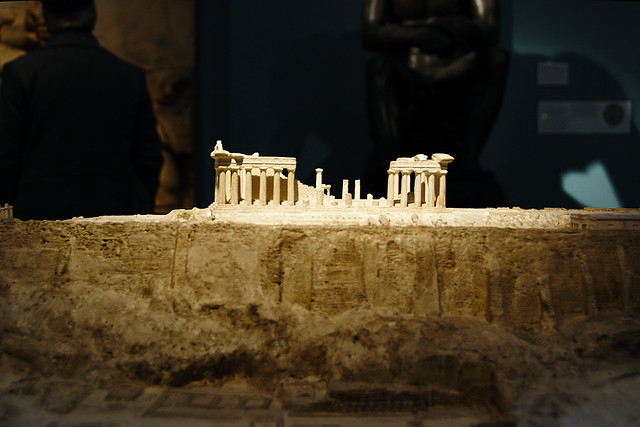This is an index and summary of the things I’ve talked about over the last month. Links for multi-post subjects go to the first post (even if it’s before this month), you can follow the internal navigation links from there. (TV shows without full posts will not be linked, but will be listed.)
Books
Fiction
“Against a Dark Background” Iain M. Banks. Part of Read All the Fiction, space opera & swashbuckling adventure Banks style. Kept.
“Carnival” Elizabeth Bear. Part of Read All the Fiction, Bear’s take on the eco/feminist science fiction sub-genre. Kept.
“Mage’s Blood” David Hair. Disappointing secondary world fantasy, with cliched and clumsy world building. Library book.
“A Canticle for Leibowitz” Walter M. Miller, Jr. Library book. One of the classic SF novels, a post-apocalyptic future history.
Total: 4
Non-Fiction
“Plantagenet England 1225-1360” Michael Prestwich. Part of the New Oxford History of England.
Total: 1
Films
The Hobbit: The Desolation of Smaug – Bilbo and the Dwarves make it into the dragon’s hoard.
Total: 1
Photos
Total: 3
Radio
The Making of the Modern Arab World. Four part Radio 4 series about the modern history of the Middle East.
Total: 1
Reflections
2013 Roundup: Non-Fiction Books.
2013 Roundup: Ancient History TV.
2013 Roundup: Modern History TV.
2013 Roundup: Photos, Trips, Museums and Concerts.
2013 Roundup: Everything Else.
Total: 8
Television
Fiction
Doctor Who: The Time of the Doctor.
Total: 1
Non-Fiction
2013: Moments in Time – a roundup of 2013, this time of the main news stories of the year shown through the photos that illustrated them. And some discussion of the changing nature of these photos (and the rise of social media’s importance in news).
The Art of the Vikings – part of the Secret Knowledge series, Janina Ramirez talks about Viking art (in a surprisingly amateur looking programme).
BBC 4 Sessions: The Christmas Session – recorded for Christmas 2011 I think, this featured various folk artists including the Unthanks and was a lot of fun. We watched it on Christmas Day.
The Brain: A Secret History – Michael Mosley series about brains, minds and experimental psychology. We never managed to record episode 1 but we decided to watch the other two anyway.
Byzantium: A Tale of Three Cities – history of Byzantium aka Constantinople aka Istanbul presented by Simon Sebag Montefiore.
Calf’s Head and Coffee: The Golden Age of English Food. Disappointing programme about Restoration era English food that couldn’t work out if it was about the history or about the food, and ended up falling short with both aspects.
Charlie Brooker’s 2013 Wipe – round up of the big events of 2013 presented by Charlie Brooker (and segments from others, which I felt worked less well).
Egypt’s Golden Empire – a three part series on one of the Sky documentary channels that we watched at J’s parents’ house. I confess I wasn’t always paying that much attention, but what I did watch seemed like a rather good and thorough overview of the New Kingdom period of Ancient Egypt.
Jool’s Annual Hootenanny – music and chat from Jools Holland and his guests (and audience). It’s our tradition for welcoming in the New Year when we’re at home – Jools on the telly and whisky to drink. Not the best one there’s ever been, but we still had fun heckling.
Pilgrimage with Simon Reeve – a programme about the history of (Christian) pilgrimage, pilgrimage sites and the modern incarnation of it.
Planet Ant: Life Inside the Colony – a bit like the series The Burrowers that we watched a while ago but about leafcutter ants not cute fluffy bunnies etc. An ants nest was reconstructed in a lab and science is being done on it (and we got told how the nest worked and about the ants biology etc).
Rise of the Continents – series about the geology of the continents and how that’s shaped them and their wildlife (and us) presented by Iain Stewart.
Sacred Wonders of Britain – Neil Oliver visits several sacred sites in Britain dating from prehistoric times through to the Reformation.
Shipwrecks: Britain’s Sunken History – Sam Willis talking about shipwrecks around Britain or involving British ships, their impact on history and our culture.
Strange Days: Cold War Britain – series about Britain and British culture during the Cold War, presented by Dominic Sandbrook.
Survivors: Nature’s Indestructible Creatures – series presented by Richard Fortey looking at three mass extinction events and showing us modern examples of the species that survived them.
Treasures of Ancient Egypt – Alastair Sooke looking at pieces of art from the whole sweep of Ancient Egyptian history.
Tudor Monastery Farm – part re-enactment, part documentary about what life would be like living on and running a farm in 1500.
Total: 18
Whimsy
A Review of the New Hamlet, Seen this Recent Afternoon – creative writing assignment for the Hamlet course on Future Learn. A piece purporting to be a review of Hamlet by an Elizabethan seeing it for the first time.
Total: 1
